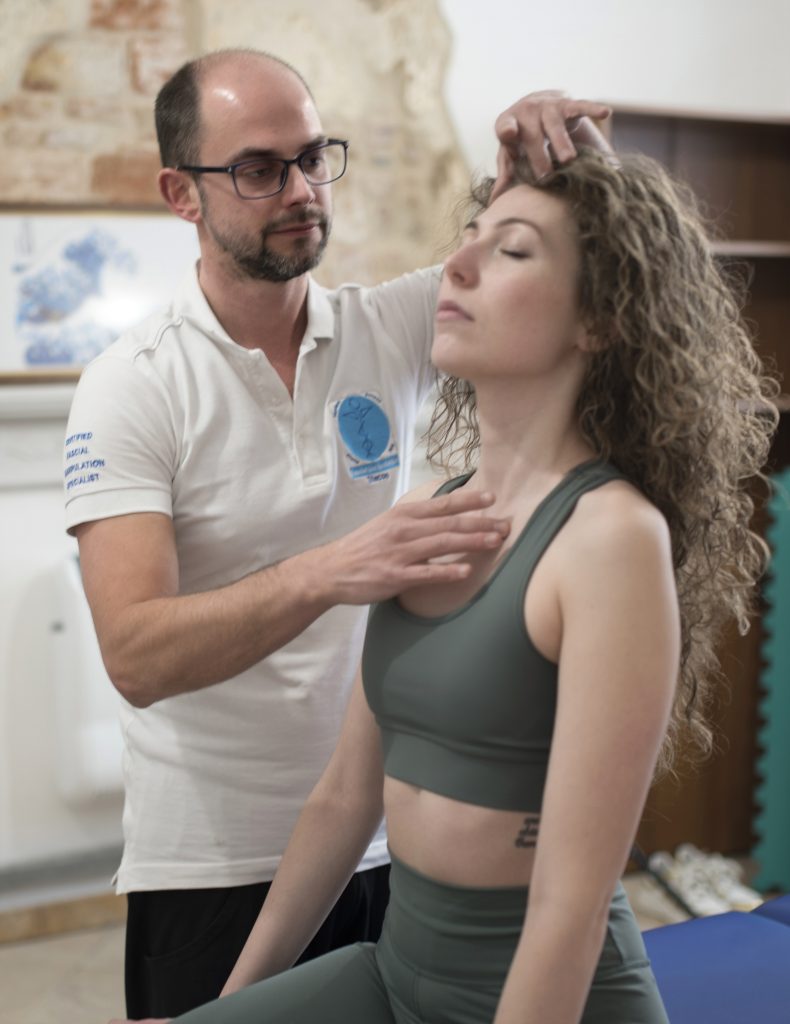Vestibular rehabilitation is an approach that integrates manual therapy and specific exercises for the recovery of vestibular problems such as benign paroxysmal positional vertigo (BPPV) and other forms of balance disturbance.
What should patients expect from vestibular rehabilitation?
Vestibular Raising is usually done on an outpatient basis, although in some cases, treatment may be initiated in the hospital. Patients are seen by a physiotherapist with advanced postgraduate training.
Vestibular Rehabilitation begins with a comprehensive clinical evaluation which should include the collection of a detailed history of the patient’s symptoms and how these symptoms affect their daily activities. The type and intensity of the symptoms will be documented and we will discuss with the patient the various therapeutic options that are most suitable for you.
Normally a course will be proposed in which initially we will intervene with methods of Manual Therapy and Fascial Manipulation in order to improve the purely mechanical aspects of the Cranio-Cervical complex. These first sessions will be progressively integrated with specific exercises.
In addition, information on medications, hearing or vision problems, other medical problems, history of falls, previous and current activity level and the patient’s life situation will be collected.
Assessment also includes administering various tests to more objectively assess the patient’s problems. The therapist will examine the visual and vestibular systems to observe how ocular motor control occurs with respect to the other structures involved.
The evaluation also makes use of the specific feeling of discomfort experienced by the patient (the more precise the description, the better one can understand how to help the person), muscle strength, range of motion of the extremities and spine, coordination, posture , balance and the ability to walk.
A personalized exercise plan is developed from clinical evaluation results, test results, and patient input on their rehabilitation goals.
For example, a person with BPPV may undergo specific maneuvers to unlock from the semicircular canal, while someone with gaze instability and dizziness due to vestibular neuritis (a perceptual deficit due to a vestibular nerve problem) may be prescribed stability exercises. gaze and addiction as well as, if necessary, balance exercises.
An important part of Vestibular Rehabilitation is establishing an exercise program that can be performed regularly at home. Compliance with the home exercise program is essential to help achieve the patient’s rehabilitation and goals.
Along with exercise, patient and caregiver education is an integral part of Vestibular Rehabilitation. Many patients find it helpful to understand the science behind their vestibular problems, as well as how it relates to the difficulties they may have with functioning in everyday life. A therapist can also provide information on how to cope with these difficulties and discuss what can be expected from Vestibular Rehabilitation. Education is important to patients because it removes much of the mystery of what they are experiencing, which can help reduce the anxiety that can occur due to their vestibular disorder.
Are vestibular rehabilitation exercises difficult to do?
The exercises aren’t hard to learn, but that doesn’t mean they’re easy to do!
Exercises can sometimes be boring; however, committing to them is the key to helping you achieve success. Setting up a regular schedule to incorporate them into your day is very important.
At first, exercises can make symptoms worse. But with time and constant work, your symptoms should improve steadily and then you will find that you are able to participate more in the activities of your daily life.
Factors that can affect recovery
When patients participate in Vestibular Rehabilitation, several factors can affect the recovery potential. For example, the type of vestibular disorder affects recovery. Patients who have stable vestibular disorder, such as vestibular neuritis or labyrinthitis, have good opportunities for satisfactory resolution of symptoms. When patients have progressive vestibular disorder, such as with multiple sclerosis, or a fluctuating condition, such as with migraine and Meniere’s syndrome, which causes spontaneous attacks of dizziness or instability, compensation can be difficult to achieve and, therefore, success. with vestibular rehabilitation it is more difficult.
There are also differences in response to therapy depending on whether the patient has one or both inner ears involved, or whether the problem lies in the vestibular parts of the brain rather than the ears.
OTHER FACTORS THAT COULD POTENTIALLY LIMIT RECOVERY:
Sedentary lifestyle
Ache
Presence of other medical conditions
Some drugs or several drugs
Emotional worries
Occasionally, symptomatic relapses may occur as the brain decompensates. This can be due to various emotional and / or physical stressors, such as personal or work-related pressures, periods of inactivity, a cold or flu, extreme fatigue or chronic lack of sleep, changes in medications, or sometimes surgery.
While it’s important for patients to consult with their doctor to make sure nothing new has happened, returning to exercises that promoted initial compensation can help promote recovery again. Also, recovery from heart failure usually occurs faster than initial compensation.

Bibliography
https://vestibular.org/article/diagnosis-treatment/treatments/vestibular-rehabilitation-therapy- Vestibular Rehabilitation /
Vestibular Rehabilitation Therapy: Review of Indications, Mechanisms, and Key Exercises
Byung In Han, a Hyun Seok Song, b Ji Soo Kimc
